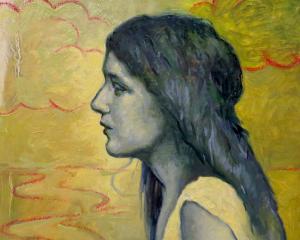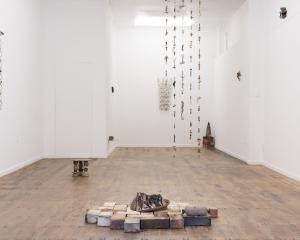"Antique watches" (Tony Williams Studio)
This fascinating display includes both fob watches and wristwatches. There is a distinct indication in this display that watches in bygone times were seen as both items of jewellery and timepieces, unlike many modern watches.
This is not to say that all modern watches favour function entirely over form, of course. Several of the wristwatches on show are of relatively modern vintage, yet still show strong aesthetic sense in their designs.
The finesse and intricacy of many of the pieces is an indication of both the artistry and craftsmanship of the watchmakers. This is particularly the case with such timepieces as a stunning 1872 silver pocket watch and a smaller but no less charming 1830s watch in 18 carat gold.
A 1910 Great Western Railway stationmaster's watch also caught the eye of this longtime railway buff.
Perhaps most astonishing is the inner mechanism of an 18th-century watch, showing that beauty of detail and design were not confined to the case. The internal workings are not only intricate but exquisite in their artistry.
"Eye of the Ancestor", Steev Peyroux and Nick Dryden (The Artist's Room).
In a break from his by now well-known prints, Peyroux has returned to brush and paint for his latest series of works. The images still bear all the hallmarks of his printerly style, however, down to the scored gesso undersurface which mimics the effects of the lithographic process.
Distinct nods are made to the topography of McCahon's peninsula paintings in several of the works. The artist's colours are muted, allowing the viewer to focus on the soft landforms which bear as much resemblance to nude life drawings as to traditional landscape.
There is symbiosis at work here. The landscapes form a perfect backdrop for the characters in the "film", a series of fine metal and wood sculptures by Nick Dryden.
Burnished copper cormorants sit on found totara posts, their metal wings reflecting slickly in the light, as if drying the salt water from their feathers.
The slightly comical yet natural poses of these sculptures resonate with the intense life of the creatures. The birds are well crafted, and Dryden has a good sense of the attitudes and forms of these shoreline sentinels.
"Mitre", Nigel Brown (Milford Galleries Dunedin).
So it is with the icon of Mitre Peak, used as a totemic representation in the latest exhibition from Nigel Brown.
The works explore archetypes of Zealandia - martyr, musician, mother, scientist, sportsman, priest - all using the peak as a character in the passion plays depicted. It is tempting to view the works as designs for an antipodean tarot deck, though this is not the artist's intention.
Instead the focus is the participants' inner thoughts - the musings which run through our minds when faced with nature's majesty.
The peak, painted in almost neon expressionist colours - an orgy of orogeny - is framed by these thoughts, presenting us with an interplay between the traveller's inner and outer worlds.
There is reflection on the difference between information and understanding, and on the scientific urge to name and classify, which kills the poetry of any situation.
The solid dramatic lines and blocks of colour echo Brown's work with stained glass, yet in the boldness there is still room for softness and subtlety.
- James Dignan








![Rozana Lee, "Drawn to see(a)" [Installation view]. Photo: Beth Garey](https://www.odt.co.nz/sites/default/files/styles/odt_landscape_small_related_stories/public/story/2024/10/blue_oyster_r_lee.jpg?itok=IGhlKMSl)



![Phaeacia (2024), by Paul McLachlan [detail]. Acrylic and rust on canvas.](https://www.odt.co.nz/sites/default/files/styles/odt_landscape_small_related_stories/public/story/2024/09/paul_mclachlan_phaeacia_de.jpg?itok=UuQsvnQc)